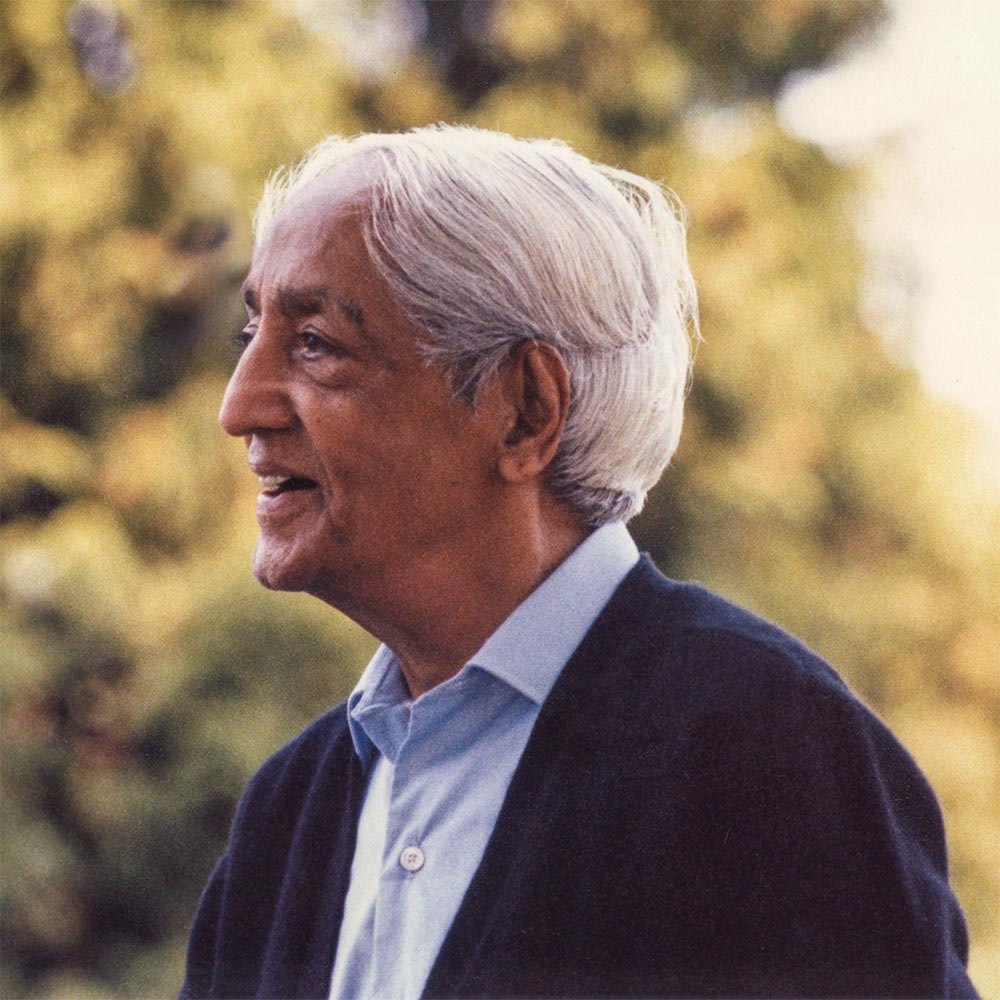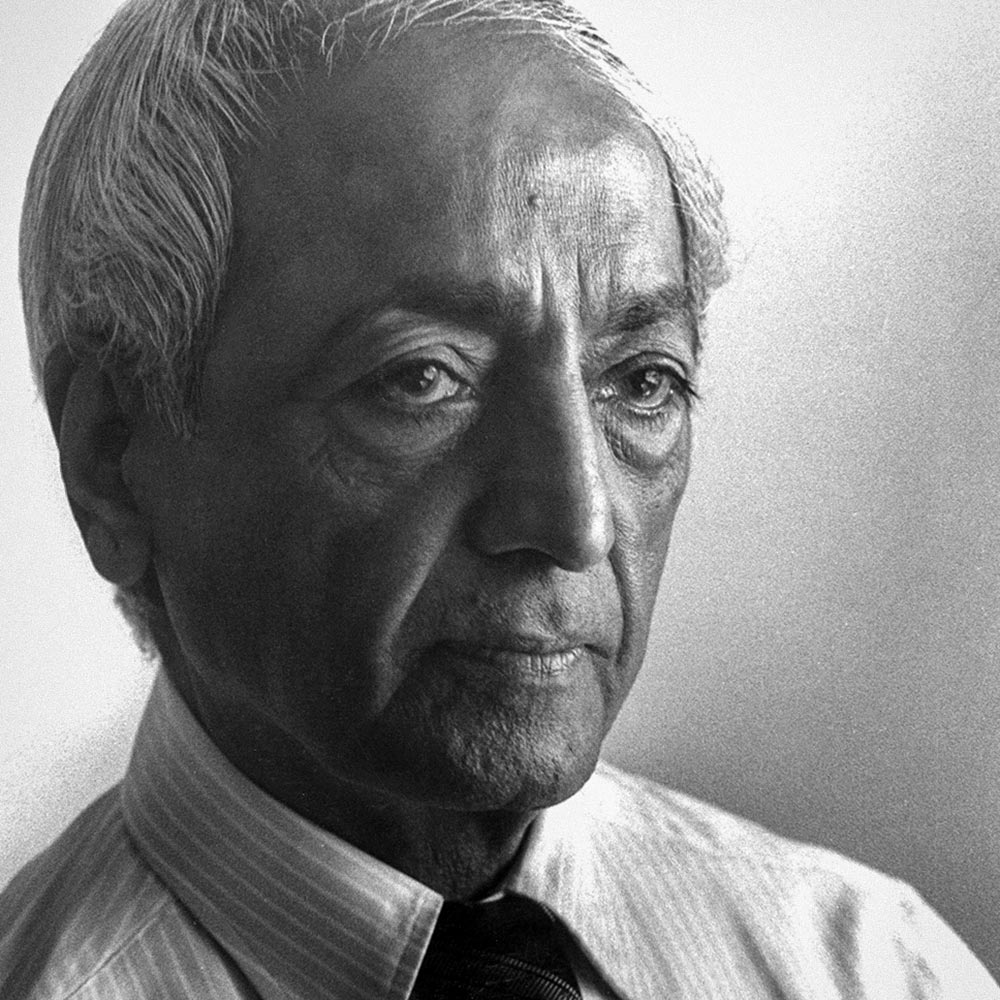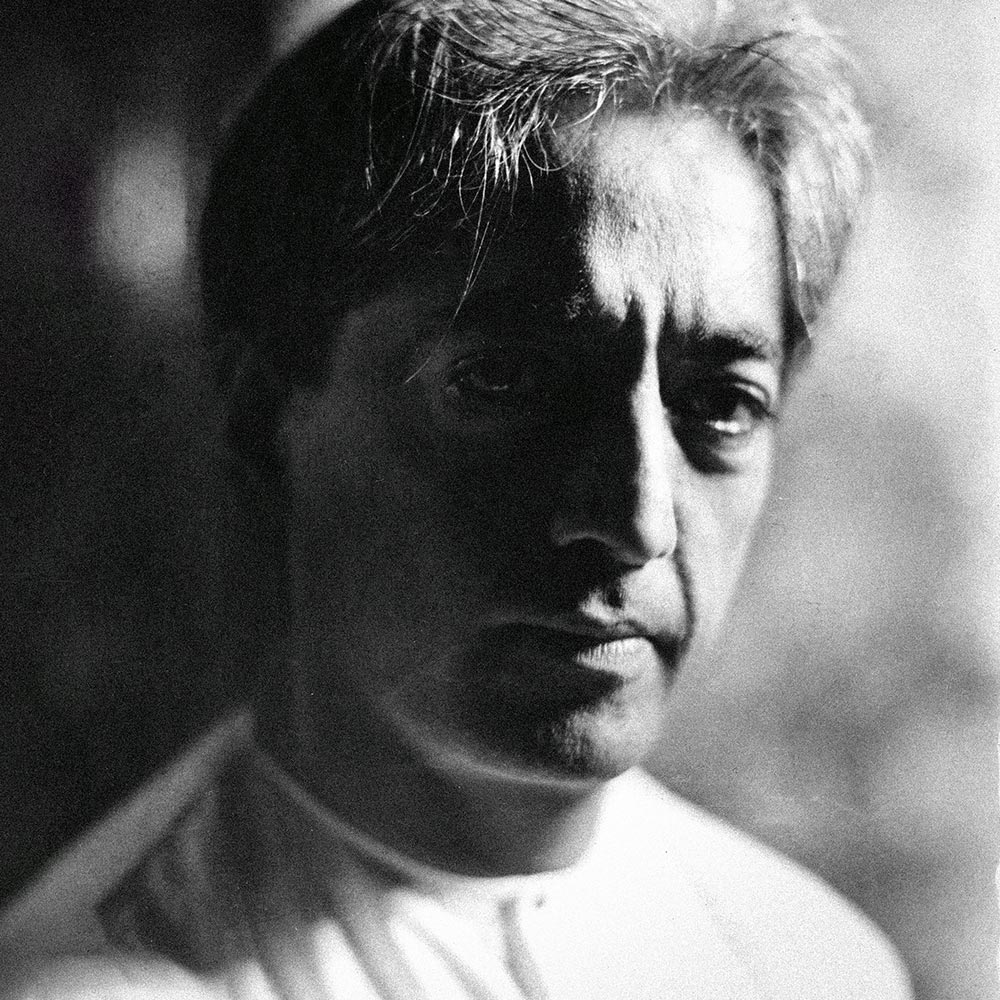What do we mean by death? Though we have theories, speculations and certain observable facts, death is still the unknown.
Krishnamurti, Commentaries on Living 2
Read More
Whether we are young, middle-aged or old, death is part of our life, just as love, pain, suspicion and arrogance are. But we do not see death as part of our life; we want to postpone it or put it as far away from us as possible.
Krishnamurti, The Network of Thought
Read More
You cannot avoid death. You may forget it, you may rationalise it or believe that you will be reborn or resurrected. Do what you will, go to any temple or book, it is always there, in festival and in health.
Read More
The mind does not want life to come to an end because it does not know what would happen if it ended. Therefore it is frightened of death.
Krishnamurti, Tradition and Revolution
Read More
You can have a lifelong discussion with life but it is not possible with death. Death is so final and absolute.
Read More
Death is a word, and it is the word and the image that creates fear. Can you look at death without the image of death?
Krishnamurti, Freedom From the Known
Read More
Can the end, which is death, be known while living? If we can know what death is while we are alive, we shall have no problem.
Krishnamurti, The First and Last Freedom
Read More
Is it possible, without resistance, without morbidity, without a sadistic or suicidal urge, and while fully alive and mentally vigorous, to enter the house of death? This is possible only when the mind dies to the known, to the self.
Krishnamurti, Commentaries on Living 2
Read More
Death puts an end to all our attachments, however superficial or deep.
Read More
There is no creation if death does not sweep away all the things that the brain has put together to safeguard a self-centred existence.
Read More
The new is only in death from moment to moment. There must be death every day for the unknown to be.
Krishnamurti, Commentaries on Living 2
Read More
Death is total nothingness.
Read More
Death is a renewal in which thought does not function at all because thought is old. When there is death, there is something totally new. Freedom from the known is death, and then you are living.
Krishnamurti, Freedom From the Known
Read More
I am living a life of the whole of humanity, and if I understand death, if I understand grief, I am cleansing the whole consciousness of mankind.
Krishnamurti, The Network of Thought
Read More
Like the leaves that fall from a tree, all things are impermanent. Nothing endures; there is always change and death.
Krishnamurti, Think on These Things
Read More
These quotes only touch on the many subjects Krishnamurti inquired into during his lifetime. His timeless and universal teachings can be explored using the Index of Topics where you will find texts, audio and video related on many themes. Another option is to browse our selection of curated articles or more short quotes. Krishnamurti’s reply when asked what lies at the heart of his teachings can be found here. Many Krishnamurti books are available, a selection of which can be explored here. To find out more about Krishnamurti’s life, please see our introduction and the biography. We also host a weekly podcast, and offer free downloads. Please visit our YouTube channel for hundreds of specially selected shorter clips. Below, you can learn more about Krishnamurti and our charity which he founded in 1968.

Who Was Krishnamurti?
J. Krishnamurti (1895-1986) is widely regarded as one of the greatest thinkers and religious teachers of all time. He spoke throughout the world to large audiences and to individuals, including writers, scientists, philosophers and educators, about the need for a radical change in mankind. Referring to himself, Krishnamurti said:
He is acting as a mirror for you to look into. That mirror is not an authority. It has no authority, it’s just a mirror. And when you see it clearly, understand what you see in that mirror, then throw it away, break it up.
Krishnamurti was concerned with all humanity and held no nationality or belief and belonged to no particular group or culture. In the latter part of his life, along with continuing to give public talks, he travelled mainly between the schools he had founded in India, Britain and the United States, which educate for the total understanding of man and the art of living. He stressed that only this profound understanding can create a new generation that will live in peace.
Krishnamurti reminded his listeners again and again that we are all human beings first and not Hindus, Muslims or Christians, that we are like the rest of humanity and are not different from one another. He asked that we tread lightly on this earth without destroying ourselves or the environment. He communicated to his listeners a deep sense of respect for nature. His teachings transcend man-made belief systems, nationalistic sentiment and sectarianism. At the same time, they give new meaning and direction to mankind’s search for truth. His teaching is timeless, universal and increasingly relevant to the modern age.
I am nobody. It is as simple as that. I am nobody. But what is important is who you are, what you are.
Krishnamurti
Krishnamurti spoke not as a guru but as a friend. His talks and discussions are based not on tradition-based knowledge but on his own insights into the human mind and his vision of the sacred, so he always communicated a sense of freshness and directness, although the essence of his message remained unchanged over the years. When Krishnamurti addressed large audiences, people felt that he was talking to each of them personally, addressing their own particular problem. In his private interviews, he was a compassionate teacher, listening attentively to those who came to him in sorrow, and encouraging them to heal themselves through their own understanding. Religious scholars found that his words threw new light on traditional concepts. Krishnamurti took on the challenge of modern scientists and psychologists and went with them step by step, discussing their theories and sometimes enabling them to discern the limitations of their theories.
Krishnamurti left a large body of literature in the form of public talks, writings, discussions with teachers and students, scientists, psychologists and religious figures, conversations with individuals, television and radio interviews, and letters. Many of these have been published as books, in over 60 languages, along with hundreds of audio and video recordings.

The Krishnamurti Foundation
Established in 1968 as a registered charity, and located at The Krishnamurti Centre, Krishnamurti Foundation Trust exists to preserve and make available Krishnamurti’s teachings.
The Foundation serves a global audience by providing worldwide free access to Krishnamurti videos, audio and texts to those who may be interested in pursuing an understanding of Krishnamurti’s work in their own lives.
In describing his intentions for the Foundations, Krishnamurti said:
The Foundations will see to it that these teachings are kept whole, are not distorted, are not made corrupt.

